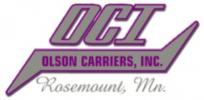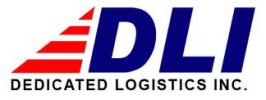FMCSA will keep random testing rate to remain at 25%
Submitted by Bill on
The Federal Motor Carrier Safety Administration (FMCSA) reports that the controlled substances random testing rate for regulated motor carriers will remain at 25% for calendar year 2017.
FMCSA regulations require that truck and bus companies that employ commercial driver’s licensed (CDL) drivers conduct random drug and alcohol tests upon these individuals at a nationally prescribed percentage, which is informed by the results of an annual survey.
For calendar year 2016, FMCSA lowered the minimum annual drug testing rate from 50% to 25% following three consecutive calendar years (2011, 2012, 2013) of drug testing data received in the Management Information System (MIS) survey, which indicated that the positive rate for controlled substances was less than one percent. FMCSA conducts the MIS survey to ensure compliance with the set testing rates.
According to federal regulations, when the data received in the MIS for two consecutive calendar years indicates that the positive rate for controlled substances is less than one percent, the FMCSA Administrator has the discretion to lower the annual testing rate to a minimum of 25% of a carriers’ driver positions. If, however, at any time the positive rate for controlled substances exceeds one percent, the testing rate will automatically revert upward to 50%.
“We will continue to monitor the data closely, and should the positive rate for drug use rise above the one percent threshold in the upcoming 2015 survey, the national random testing rate requirement will be immediately increased to 50 percent,” said FMCSA Administrator Scott Darling.
FMCSA’s Drug and Alcohol Testing Survey measures the percentage of CDL drivers who test positive for drugs and/or alcohol, as a result of random and non-random (i.e., pre-employment, post-crash, and reasonable suspicion/follow-up) testing. In 2014, FMCSA required carriers to randomly test 50% of their CDL drivers for drugs and 10 percent of their CDL drivers for alcohol.
According to the survey, for random drug and alcohol testing conducted in 2014 (the most recent data available):
The estimated positive usage rate for drugs in 2014 was 0.9%. For 2012 and 2013, the estimated positive usage rate for drugs was estimated to be 0.6% and 0.7%, respectively.
The estimated violation rate for alcohol usage (the percentage of drivers with a blood alcohol content (BAC) of 0.04 or higher) in 2014 was 0.08%. For 2012 and 2013, the alcohol usage violation rates were 0.03% and 0.09%, respectively.







